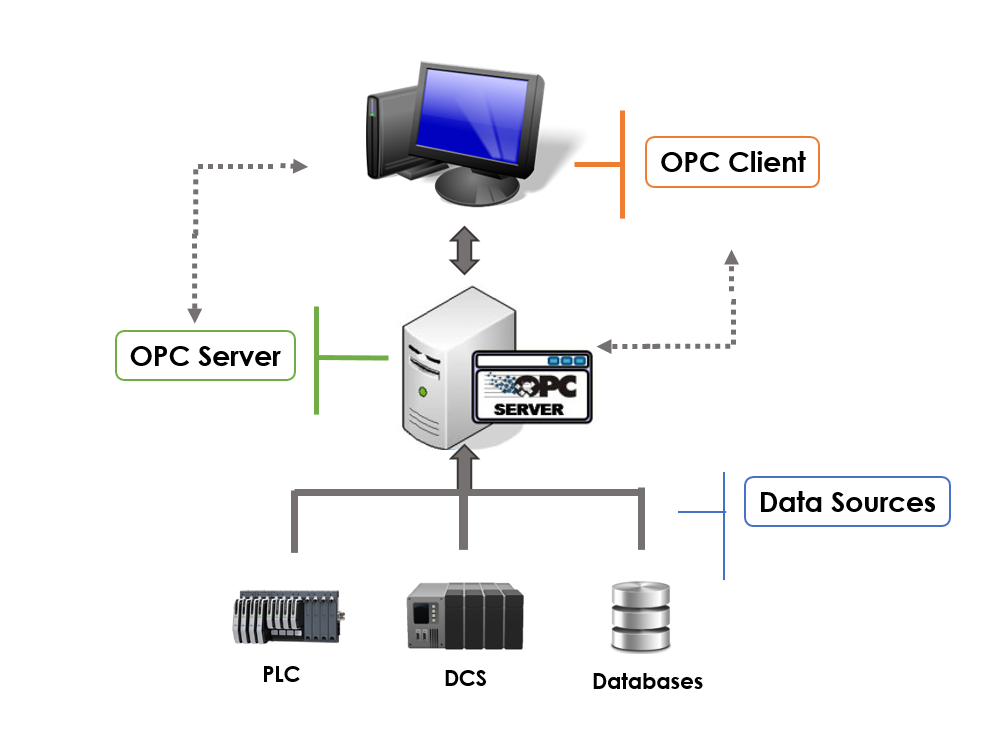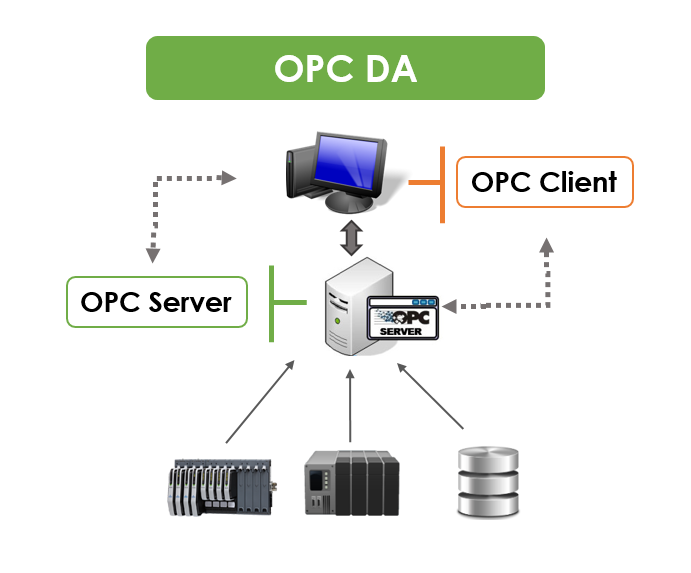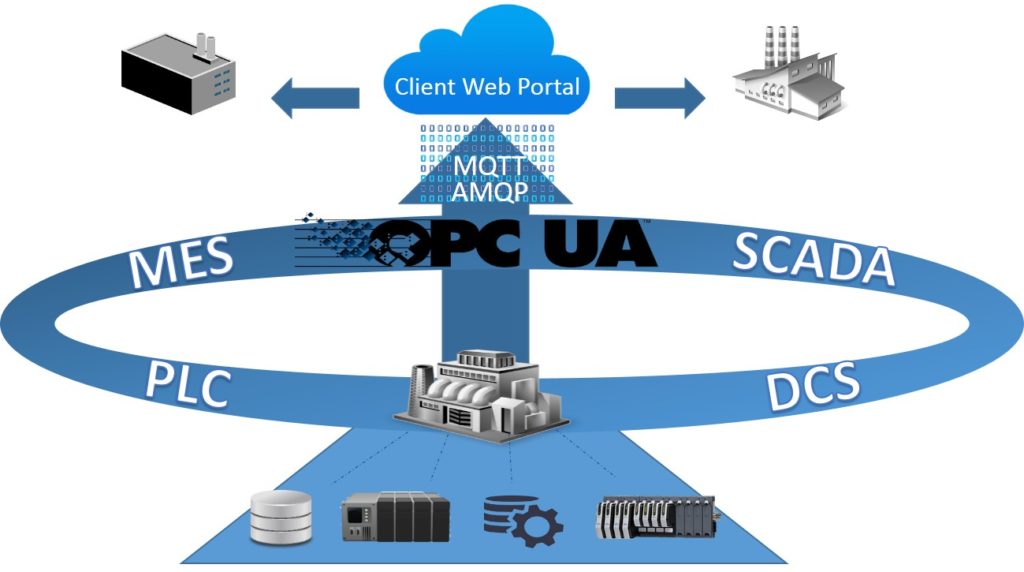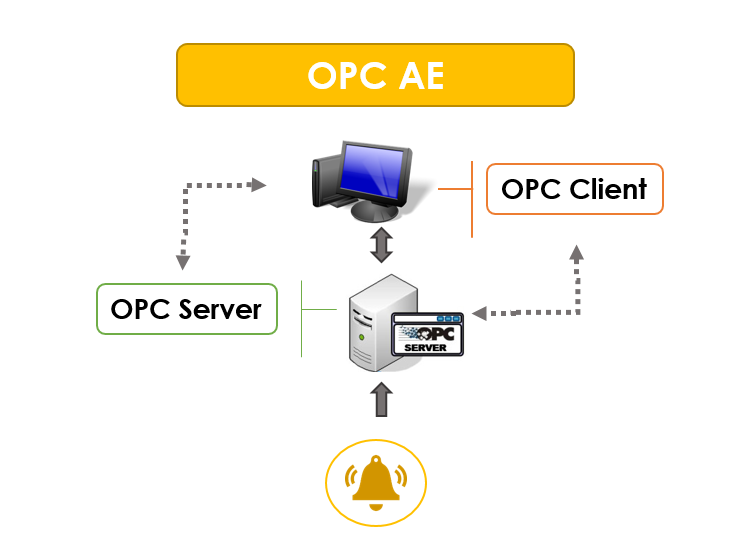What is OPC?
OPC (originally OLE for Process Control) is based on OLE/COM standard from Microsoft. This standard ensures exchange of data between industrial automation applications. It ensures high interoperability between client and server applications from multiple vendors.

OPC Specifications
The most common types of data used between devices and applications in industries are: Real-time data, Historical data, and Alarm & Event data. In the OPC Classic model, we have the following specifications; Data Access (DA), Alarm and Events (AE), Historical Data Access (HDA), XML Data Access (XML DA) and finally Data eXchange (DX).
 |
1. OPC DAOPC DA stands for OPC Data Access. It defines how real-time data can be transferred between a data source and a data sink such as PLC and a HMI. It ensures connection between industrial hardware and software applications using OPC DA servers and clients in order to read or write real-time data. |
2. OPC HDAOPC HDA stands for OPC Historical Data Access. It is used to retrieve historical data for the purpose of analysis, and optimization, etc. Software applications can use OPC HDA to write historical data as well. |
 |
|
|
3. OPC AEOPC AE stands for OPC Alarms and Events. It is intended to be used with systems that generate alarms. It provides the means to connect industrial hardware and software applications using OPC AE servers and clients. The OPC AE servers captures the alarms from the source system and forward them to any client application interested in this information. |
Why OPC does matter?
There are several features that OPC delivers to the end-users, such as:
- Interoperability:
- OPC applications can easily communicate with OPC enabled data source without the need of any driver software.
- Users may choose devices, controllers, and applications from different vendors; the inter-communication is assumed.
- Ease of use:
- Flexible means of data access and simplified data model.
- Multiple OPC connections management without limitation on number of connections made.
 |
IoT & Interoperability: From OPC to OPC UAOPC UA (Unified Architecture) integrates all the functionality of the individual OPC Classic specifications into one extensible framework. It ensures secure, open and reliable interoperability between OPC Classic and OPC UA. It also provides a flexible mechanism for information exchange between enterprise-type systems and the kind of controls, monitoring devices and sensors that interact with real world data. Moreover, OPC UA is a platform independent service-oriented architecture that integrates all the functionality of the individual OPC Classic specifications into one extensible framework. |
For more information about:
- OPC Server: https://integrationobjects.com/sioth-opc/sioth-opc-servers/
- OPC Client: https://integrationobjects.com/sioth-opc/sioth-opc-clients/
- OPC UA: https://integrationobjects.com/sioth-opc/sioth-opc-unified-architecture/
- OPC Tunneling: https://integrationobjects.com/sioth-opc/sioth-opc-tunneling/
- OPC Data Archiving: https://integrationobjects.com/sioth-opc/sioth-opc-data-archiving/
- OPC Client Toolkits: https://integrationobjects.com/sioth-opc/sioth-opc-client-toolkits/
- OPC Server Toolkits: https://integrationobjects.com/sioth-opc/sioth-opc-server-toolkits/
- OPC Free Tool: https://integrationobjects.com/sioth-opc/sioth-opc-free-tools/



